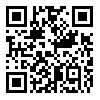Volume 13, Issue 4 (11-2021)
jorar 2021, 13(4): 272-279 |
Back to browse issues page
Download citation:
BibTeX | RIS | EndNote | Medlars | ProCite | Reference Manager | RefWorks
Send citation to:



BibTeX | RIS | EndNote | Medlars | ProCite | Reference Manager | RefWorks
Send citation to:
Mousavi A S, Nasrollahi A, Shiri T. Explanation of Executive Model of IRIB News in Crisis Management. jorar 2021; 13 (4) :272-279
URL: http://jorar.ir/article-1-759-en.html
URL: http://jorar.ir/article-1-759-en.html
Department of Media Management, Islamic Azad University of Central Tehran Branch, Tehran, Iran
Abstract: (1307 Views)
INTRODUCTION: Due to the vulnerability of the country to various disasters and events, the role of directing public opinion, and the attention of the general public and political elites to Islamic Republic of Iran Broadcasting (IRIB), the present study aimed to obtain and explain an executive model of IRIB news in crisis management.
METHODS: This study was conducted based on an applied research method in terms of objective, and it is qualitative research using an exploratory approach in terms of method. The statistical population consisted of experts, managers, and professors of media and crisis (Crescent Society and Crisis Management Organization). The data were collected using a semi-structured in-depth interview technique, and a saturation was observed using a targeted sampling and after 25 interviews. In addition, the Strauss method in grounded theory was applied to analyze the data. Moreover, in the process of theory analysis, MAXQDA (version 2020) was applied, and a total of 120 concepts and 20 categories were identified.
FINDINGS: Some categories, such as the unprofessional nature of media, unprofessional coverage of news, biased news organization, lack of media independence, public distrust, and tendency toward alternative media, are the requirements for explaining an executive model of news in crisis management, which are axially coded as causal conditions. In addition, appropriate news coverage, information, analytical programs, people's voice, crisis management principles and organization, education and informing, and culturalization, were the seven main categories selected as the main strategies to develop the model.
CONCLUSION: Some categories, such as the improvement of media performance, de-escalation instead of crisis-making, rumor prevention, obtainment of public trust, accountability of officials, organizing and mobilizing human forces, social cohesion, increasing resilience, as well as reconstruction and rehabilitation, are of the consequences of using appropriate strategies to explain IRIB news in crisis management.
METHODS: This study was conducted based on an applied research method in terms of objective, and it is qualitative research using an exploratory approach in terms of method. The statistical population consisted of experts, managers, and professors of media and crisis (Crescent Society and Crisis Management Organization). The data were collected using a semi-structured in-depth interview technique, and a saturation was observed using a targeted sampling and after 25 interviews. In addition, the Strauss method in grounded theory was applied to analyze the data. Moreover, in the process of theory analysis, MAXQDA (version 2020) was applied, and a total of 120 concepts and 20 categories were identified.
FINDINGS: Some categories, such as the unprofessional nature of media, unprofessional coverage of news, biased news organization, lack of media independence, public distrust, and tendency toward alternative media, are the requirements for explaining an executive model of news in crisis management, which are axially coded as causal conditions. In addition, appropriate news coverage, information, analytical programs, people's voice, crisis management principles and organization, education and informing, and culturalization, were the seven main categories selected as the main strategies to develop the model.
CONCLUSION: Some categories, such as the improvement of media performance, de-escalation instead of crisis-making, rumor prevention, obtainment of public trust, accountability of officials, organizing and mobilizing human forces, social cohesion, increasing resilience, as well as reconstruction and rehabilitation, are of the consequences of using appropriate strategies to explain IRIB news in crisis management.
Short Reports or Letters: Research Article |
Subject:
سایر موارد مرتبط با بحران، حوادث وامدادونجات
Send email to the article author
| Rights and permissions | |
 |
This work is licensed under a Creative Commons Attribution-NonCommercial 4.0 International License. |







